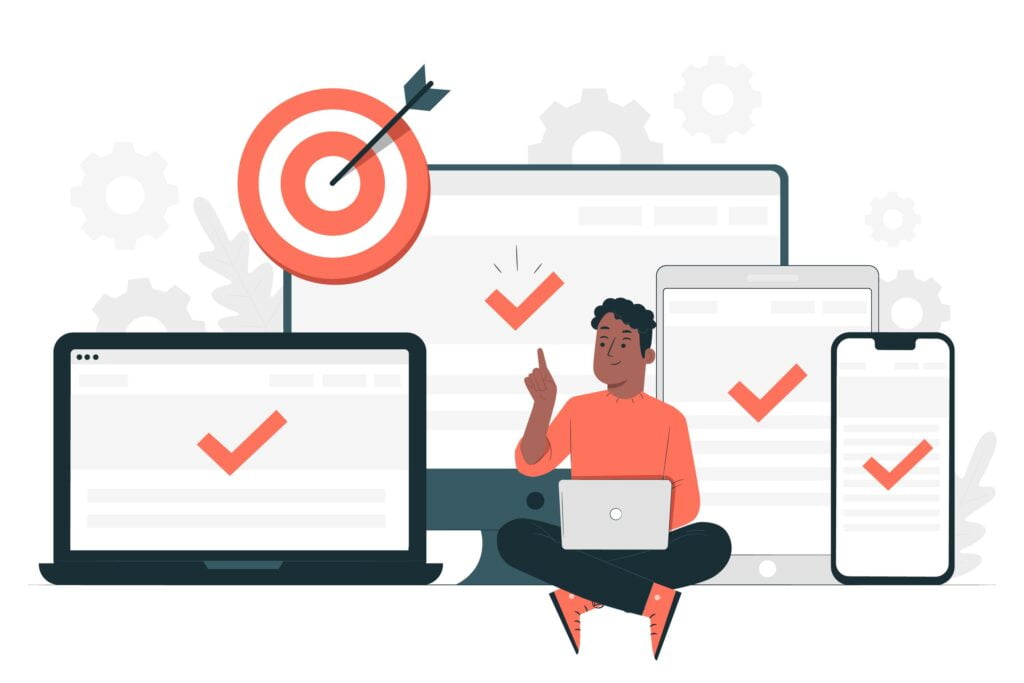
5 Steps for a Successful Website Designing Strategy
Are you looking to build a website that not only has an appealing design, but also generates traffic and leads? A well-executed website design strategy is crucial for achieving your online objectives. In this article, we will outline five key steps to help you create a website that captivates your audience and delivers tangible results.
To create an effective design, it’s important to first understand your target audience and their specific needs. Conducting thorough research will allow you to identify their preferences, enabling you to customize your design accordingly. Additionally, prioritize creating a user-friendly interface that is intuitive and easy to navigate. A clutter-free design with clear call-to-action buttons will guide users seamlessly throughout their journey on your website.
To attract organic traffic to your website, it’s crucial to optimize it for search engines. This involves incorporating relevant keywords into your content and meta tags, which can improve your ranking in search engine results. Additionally, with the growing number of mobile users, making sure your website is mobile-friendly is essential for reaching a broader audience.
Lastly, regularly testing and analyzing your website’s performance enables you to make necessary adjustments and improvements. By monitoring metrics like bounce rate and conversion rate, you can optimize your website for an enhanced user experience and increased conversions.
Understanding the importance of a website design strategy

A well-crafted website is a valuable asset that can strengthen your online presence and appeal to your desired audience. It acts as the front door to your brand, effectively communicating your message and values to potential customers. A strategic website design lays the groundwork for a successful online platform.
To create an effective website, it’s important to have a carefully planned strategy. This strategy should focus not only on creating a visually appealing site but also on ensuring functionality and user-friendliness. By understanding the preferences, needs, and behaviors of your target audience, you can develop a website that truly connects with them.
Step 1: Define your website’s goals and target audience

Before you start designing your website, it’s important to establish clear goals and understand who your target audience is. What are the main objectives for your website? Do you want to generate leads, sell products, or provide information? Being clear about these factors will guide your design process effectively.
By understanding your goals, you can shape your website design strategy to effectively meet those objectives. Furthermore, identifying and understanding your target audience enables you to customize your design and content to cater to their specific needs and preferences.
Step 2: Conduct thorough market research and competitor analysis

In order to create a website that distinguishes itself from competitors, conducting comprehensive market research and competitor analysis is crucial. This allows you to gain valuable insights into your industry, stay informed about current trends, and identify the unique aspects that set your competitors apart.
By examining the websites of your competitors, you can uncover their strengths and weaknesses. This valuable information allows you to leverage it to your advantage. Identify opportunities that will set your website apart from others and offer something distinctive to your target audience.
Step 3: Plan your website’s structure and user experience

After you have a solid grasp of your objectives and the audience you’re targeting, it’s time to strategize the structure and user experience of your website design. This entails outlining the various pages and sections of your site and deciding how users will navigate them.
To provide a smooth user experience, it’s crucial to have a clutter-free design paired with intuitive navigation. Users should be able to locate desired information quickly and effortlessly. Utilize clear headings, menus, and call-to-action buttons to guide users seamlessly throughout their website journey.
Step 4: Create a visually appealing and responsive website design

Now let’s move on to the exciting stage – designing an visually appealing and responsive website design. It’s crucial that your design reflects your brand identity and connects with your target audience. To achieve this, carefully choose colors, fonts, and images that align with your brand personality and evoke the desired emotions.
In addition to looking visually appealing, it is important for your website design to be responsive and mobile-friendly. With the growing number of people using mobile devices, it is essential that your website looks and functions well on different screens and devices. A responsive design guarantees a consistent user experience across all platforms.
Step 5: Test, optimize, and maintain your website

Creating a website is an ongoing process that requires continuous testing, optimization, and maintenance. Once your website is live, it is important to monitor its performance and make necessary adjustments to improve user experience and drive conversions.
To assess the performance of your website design, monitor metrics like bounce rate, conversion rate, and average time on page. Conduct A/B testing to compare different elements of your website and determine which version yields better results. Additionally, make it a habit to update your content regularly and confirm that all links are functioning correctly.
Common website design mistakes to avoid
1. Avoid making the website design too complicated: A cluttered and confusing design can overwhelm users, causing them to leave your website. Keep your design simple and prioritize the most important elements.
2. Neglecting mobile optimization: In today’s smartphone-dominated world, it is essential to prioritize the optimization of your website for mobile devices. Failing to do so can result in a subpar user experience and decreased visibility in search engine rankings.
One common frustration for website users is slow loading speed. People expect websites to load quickly, and when they don’t, it can have a negative impact on the user experience. To improve your website’s performance, there are several steps you can take. First, compress any images on your site to reduce their file size without sacrificing quality. Second, minify your code by removing unnecessary spaces and characters, which can help make your.
Tools and resources for effective website design
To develop an effective website designing strategy, there are various tools and resources that can aid you. Some of these include:
One important tool for website design and development is a content management system (CMS). Popular CMS platforms, such as WordPress, Joomla, and Drupal, offer user-friendly interfaces and templates that simplify the process.
One useful tool for designing websites is wireframing and prototyping software. Programs like Adobe XD, Sketch, and InVision offer features that enable you to create detailed wireframes and interactive prototypes, allowing you to visualize the structure and user experience of your website.
If you want to optimize your website design for search engines and track its performance, there are several tools available that can help you achieve this. Some popular options include SEMrush, Moz, and Google Analytics.
The role of SEO in website design
Website design is greatly influenced by search engine optimization (SEO), which plays a vital role. By strategically incorporating relevant keywords into your website’s content and meta tags, you can significantly improve your chances of achieving higher rankings in search engine results.
To enhance the visibility of your website in search engine results, it is crucial to conduct keyword research and identify relevant and high-ranking keywords for your industry. Strategically incorporate these keywords throughout your website’s content, headings, and meta tags. This will help improve its visibility to potential users searching for related information.
Conclusion
A successful website designing strategy is essential for creating a website that engages your audience and delivers results. By understanding your target audience, conducting thorough research, planning your website’s structure, and creating a visually appealing design, you can create a website that stands out from the competition.
To ensure your website remains effective and aligns with your objectives, it’s crucial to regularly test, optimize, and maintain it. By avoiding common design pitfalls and utilizing tools and resources, you can enhance your overall website design strategy.


